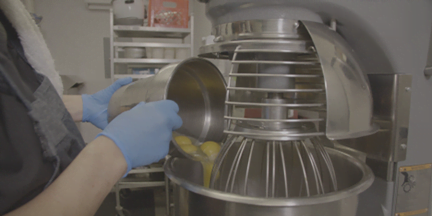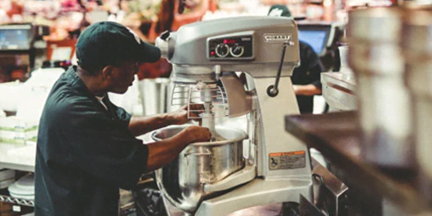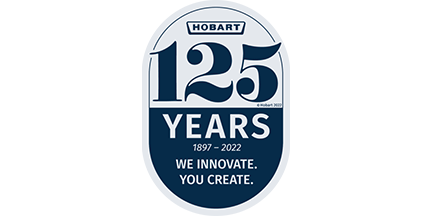From food prep equipment maintenance to general equipment cleaning and sanitization, it’s important to start the school year off right with some best practices. They can help ensure your K-12 kitchen is ready to provide students with the fresh, creative foods they’re looking for — whether it’s fruits and vegetables for a salad bar or healthy, grab-and-go sandwiches.
During the summer months when equipment sits idle, it’s easy for mixers, food processors and commercial slicers to collect dust or other debris that could adversely affect their performance. Ideally, all equipment would have been cleaned thoroughly and covered prior to storage at the end of the previous school year, which makes prepping it for the next year that much easier.
Make a visual inspection
As a starting point to readying your food prep equipment, inspect your commercial stand mixer for any chipped paint and address accordingly to prevent chips from inadvertently being mixed in the bowl with ingredients.
Visually inspect the cutting tools on your industrial food processor to make sure all the screws and attachments are in place and intact. This is a good course of action not just before the school year, but before every use.
Check your slicer for any worn parts, and be sure gaskets and boots aren’t damaged. Replace as needed.
Take a dry run
Prior to cleaning and sanitizing your food prep equipment for initial use, it’s important to be sure it is in working order. This helps avoid unplanned downtime when you’re ready to put the equipment to work during the school year.
Run your mixer for a couple of minutes with no agitators, accessories or ingredients. Also raise and lower the bowl. Listen for any unfamiliar noises. Call your mixer manufacturer’s service center or your in-house maintenance personnel if this occurs . Run your food processor for a couple of minutes as well to be sure it is working properly. These dry runs help prevent waste of ingredients, since you are checking that the equipment is functioning properly before loading it and putting it to use.
Do the same with your slicer, running it briefly and walking through the motions of use without anything on the carriage.
Properly clean, sanitize and maintain
After conducting dry runs with all your food prep equipment, the next step is to clean, sanitize and perform routine maintenance. For all pieces of equipment, first disconnect the electrical power. Then clean and sanitize according to the owner’s manual or cleaning card.
Lubricate points on your mixer according to directions in the owner’s manual, including the area the bowl guard spins and where the bowl moves up and down. Work mineral oil underneath the planetary seal. Check that all interlocks are working properly on your food processor and lubricate the carriage slide rod on your slicer.
For K-12 schools with self-servicing maintenance, visit the Hobart service website for service manuals and technical publications to maintain the equipment that’s in your kitchen.
Put it all to work
Having employees who are comfortable working with food prep equipment is just as important as having mixers, food processors and slicers that are in their best shape. To get ready for the upcoming school year, be sure everyone is properly trained. Look for resources such as brochures and videos to help.
Operating food prep equipment doesn’t have to be intimidating and it can save you time in the kitchen (especially using food processors) as you bring new and fresh creations to your students.




